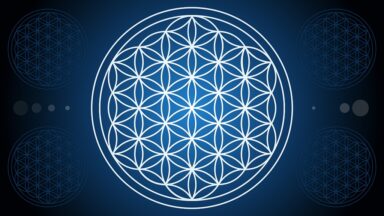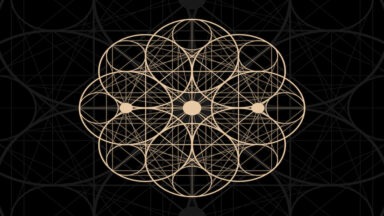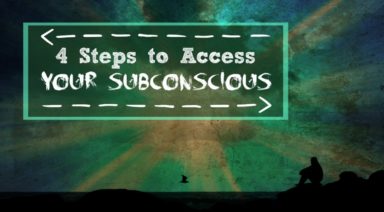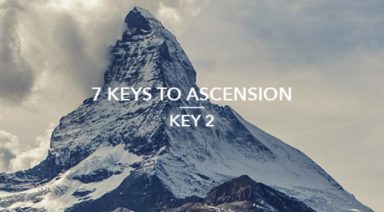How to Remember Your Past Lives: 3 Ways to Access Past Life Memories

Sometimes life feels familiar in ways that are hard to explain. You meet someone and feel you’ve known them forever. Or you travel somewhere new and something deep inside stirs, like a memory you can’t quite place. Maybe these are traces of memories of past lives, or maybe they’re just intuition. Either way, they’re worth paying attention to.
Patterns often repeat themselves. Unexplained fears. Sudden talents. Relationships that circle back to the same lessons. These moments might be echoes from a previous life still influencing your present life.
Exploring past life experiences is not only about curiosity. It can be about understanding how your soul’s history continues to shape who you are. You might not find clear answers at first. Insights rarely arrive as complete stories. They show up in fragments, symbols, and emotions. Sometimes they make sense only later.
Table of Contents
- Can You Access Past Life Memories?
- How Past Lives Might Shape Your Present Life
- Signs You Might Have Lived Before
- Three Ways to Explore Past Life Memories
- Making Sense of What You Find
- The Story of Matías De Stefano
- Living With Past Life Insights
Can You Access Past Life Memories?
The idea of reincarnation suggests that human beings live more than one lifetime, each one leaving behind energetic and emotional imprints. Most people don’t consciously recall memories of previous lives, but certain practices can help open the door to them. Techniques like deep meditation, past life regression, or exploring the Akashic Records can reveal glimpses that feel older than this lifetime.
For some, these insights appear as flashbacks, vivid dreams, or waves of emotion. For others, it’s just a subtle pull toward a person, a place, or even a time period. In my experience, it’s unpredictable. You can’t force it, and that’s often what makes it meaningful.
The process takes patience. Sometimes fragments come together slowly, piece by piece. You might feel a sensation before you see an image, or recognize a lesson before you know its origin.
How Past Lives Might Shape Your Present Life
Emotional patterns often carry forward from former lives. Dr. Ian Stevenson, a psychiatrist who studied young children recalling memories of past lives, documented cases where birthmarks matched fatal injuries described in these memories. Whether you see this as scientific or spiritual, it’s hard to ignore the consistency of such reports.
These imprints may not prove anything, but they do suggest continuity between lives. A certain fear, gift, or attraction could reflect something unresolved or unfinished from a previous life. Recognizing these connections can bring clarity and healing in current life.
I once worked with someone who had a deep fear of the ocean. Through past life regression therapy, guided by a trained hypnotist, she recalled a drowning incident from what felt like another lifetime. The memory came in pieces, more feeling than image. Still, acknowledging that connection helped her let go of the fear over time. Experiences like this show how understanding past life experiences can release something held deep in the subconscious.
Signs You Might Have Lived Before
Even if you never access vivid memories, signs of former lives can appear in subtle ways:
- A powerful connection with someone you’ve just met
- Fascination with a specific era or culture
- Unexplained fears or emotional triggers
- Skills or talents that seem to come naturally
- Dreams or visions that feel oddly specific
Most people notice just one or two of these patterns. Others find the signs everywhere once they start paying attention. Sometimes a single clue opens a path toward remembering more.
In my experience, recognizing a familiar emotion or attraction can be just as revealing as a full flashback. It’s less about proving a past and more about noticing what the soul is trying to show you now.

Three Ways to Explore Past Life Memories
1. Deep Meditation
Deep meditation is one of the simplest ways to open the mind to memories of past lives. The key is to relax and observe whatever comes up without judgment. Images, sensations, or feelings may surface. Some might seem random. Others might carry a weight that feels ancient.
Before beginning, it can help to set a quiet intention, such as:
“I’m open to seeing what my soul wants me to understand.”
Then you simply allow the experience. Don’t chase it or analyze too soon. In my experience, the most authentic insights from former lives come gently, not dramatically. Even a fleeting moment of recognition can hold meaning.
2. Past Life Regression Therapy
Past life regression therapy uses relaxation and visualization to uncover memories of previous lives stored in the subconscious. A trained hypnotist guides you into a meditative state, helping you move beyond surface thoughts. Some people experience vivid scenes or sensations that feel like a flashback to another existence.
Whether these experiences are literal or symbolic, they often reveal emotional truths. They can explain patterns that don’t make sense in your present life or help resolve fears that seem to have no origin.
I once met someone who had always struggled to speak publicly. During past life regression, she recalled a lifetime where her voice had been silenced by strict authority. That realization gave her the courage to use her voice more freely in her current life. Even if symbolic, the experience carried emotional truth.
3. Exploring the Akashic Records
The Akashic Records are said to contain every thought, action, and experience the soul has ever had. Accessing them, either independently or through a reader, allows you to explore lessons across past lives and recurring patterns of growth.
When people tap into these records, they often describe sensations of recognition more than visual imagery. Insights come as feelings, intuitive words, or brief impressions. You might discover why certain people or challenges keep reappearing, or how your soul’s history is guiding your spiritual awakening.
Even a few minutes of connection can shift how you see your current life. These insights don’t have to be dramatic to be meaningful.
Integrating What You Discover
Exploring past life memories is not about getting lost in the past. It’s about using what you find to better understand your choices now. A glimpse into a previous life might explain an ongoing struggle or illuminate a hidden strength.
In some cases, the lesson might be an emotional release. In others, it could be creative inspiration or reconciliation. What matters most is how the experience influences your perspective in the present life.
It helps to write down what you recall after meditation or regression. Don’t try to label everything as fact or fiction. Treat it as information from your inner world, something your soul is offering for reflection.
The Story of Matías De Stefano
Spiritual teacher Matías De Stefano has captivated audiences with his extraordinary ability to recall multiple past lives since childhood. Unlike those who access memories through regression, Matías’ recollections emerged naturally and in vivid detail, spanning ancient civilizations, planetary histories, and metaphysical dimensions.
Through his Gaia podcast and original series The Journey of Remembering, Matías shares how his memories shaped his understanding of the universe and his role in the collective spiritual awakening. His story offers profound insight into how connecting with the memories of past lives can guide us toward purpose, unity, and a deeper remembrance of who we truly are.
Just as with Matías’s experience, remembering past lives invites us to explore the continuity of consciousness and to see life as an unfolding journey rather than a single chapter. Whether through meditation, past life regression, or the Akashic Records, these methods can open the door to self-discovery and healing.
Ultimately, the value of these experiences lies not in proving their accuracy but in how they help us grow, evolve, and live our present life with peace, clarity, and a renewed sense of purpose.
Living With Past Life Awareness
Understanding past life experiences and exploring the soul’s history is not about proof or persuasion. It’s about awareness. Insights from past lives can explain repeating patterns, clarify emotional attachments, or simply remind you that growth is continuous.
Whether through deep meditation, past life regression, or the Akashic Records, each method opens a doorway to reflection. Sometimes that reflection is subtle, almost imperceptible. Other times it feels profound, as if you’ve remembered something essential about who you are.
Ultimately, remembering past lives isn’t about living in the past. It’s about carrying forward what matters most into the present life. Each glimpse, each small understanding, becomes part of how you live more consciously now.
What Are the Akashic Records and What Are They For?

The Akashic Records are energetic archives containing the complete history of every soul. Every thought, word, action, and intention leaves an imprint on this energetic field, sometimes called the Akashic Library. This universal repository preserves past lives, current experiences, and potential future paths, offering insights into the soul’s journey, life’s purpose, and karmic patterns.
What is most astonishing is that anyone can access the Records. Through focused intention, guided meditations, or prayer, you can connect with this source of universal wisdom to gain guidance, clarity, and a deeper understanding of your spiritual path. This article explores what the Akashic Records are, how to access them, the benefits of an Akashic reading, and steps to begin your journey of spiritual growth.
Table of Contents
- What Are Akashic Records?
- History and Origins of the Records
- What Is an Akashic Records Reading Like?
- What Kind of Questions Can Be Asked?
- Are There Any Dangers in Accessing the Records?
- Who Can Read the Akashic Records?
- How to Learn to Read the Akashic Records
- Benefits of Accessing the Records
- Closing Prayer and Integration
What Are Akashic Records?
The Akashic Records are a universal memory of existence, a non-physical, energetic space where every thought, word, action, and emotion is recorded. Sometimes referred to as the Akashic Library, this archive preserves the history of each soul, its past lives, current experiences, and potential futures. It offers a comprehensive perspective on the soul’s journey, linking all beings and levels of existence across time.
The term akasha (or akasa) comes from Sanskrit and means ether or astral light, considered the fifth element in many spiritual traditions. These subtle vibrations capture not only individual life experiences but also universal patterns, providing insight into karmic influences, personal growth, and the soul’s purpose.
For anyone accessing the Records for the first time, the experience can reveal hidden tendencies, unexplored potentials, or connections with loved ones who have passed. The Records are a living resource for spiritual growth, supporting clarity, healing, and understanding in all areas of life.
Accessible through meditation, focused intention, or the guidance of an experienced practitioner, the Akashic Records can provide wisdom about behavioral patterns, relationships, and challenges, serving as a practical tool for navigating your spiritual journey.
In the series Microdose, available on Gaia, the fascinating subject of the Akashic Records is explored, offering practical perspectives for those wishing to deepen their understanding and experience of this universal library.
History and Origins of the Records
The concept of the Akashic Records has roots in both Eastern and Western spiritual traditions. In the East, philosophies have long described akasha as the fundamental etheric fabric of existence, a subtle dimension where all experiences are remembered as vibrations or astral light.
In the West, Helena Blavatsky, founder of the Theosophical movement in the late 19th century, introduced the Akashic Records after her studies and experiences in Tibet. There, monks and mahatmas shared that the records exist in the akasha—a Sanskrit word meaning ether—and are the repository of universal knowledge. Blavatsky claimed she could access them through clairvoyance and psychic abilities, including astral projection, and she shared these insights as part of a broader philosophy of universal wisdom. Her teachings emphasized that human thoughts, words, and actions leave lasting impressions on this subtle field, influencing spiritual understanding and personal growth.
Rudolf Steiner, another influential metaphysician, expanded the Western understanding of the Records, describing them as a source of inspiration for human ideals and evolution. He proposed that the Akashic Records not only preserve past events but also reveal patterns that guide humanity toward harmony, justice, and spiritual development.
During the 20th century, Edgar Cayce, often called America’s “sleeping prophet,” popularized the Akashic Records through his psychic readings. Cayce described how individuals could access the Records of their past, present, and potential futures to facilitate healing, gain clarity about life’s purpose, and understand karmic patterns. He likened the Records to a Book of Life, connecting each person to a universal consciousness and to the broader flow of the soul’s journey.
In the late 20th and early 21st centuries, Linda Howe further advanced the understanding and practice of accessing the Akashic Records. Through her teachings, books, and workshops, Howe developed practical methods for connecting with the Records, emphasizing personal empowerment, spiritual guidance, and insight into one’s spiritual path. Her work has helped make the Akashic Records accessible to a wide audience, bridging historical teachings with contemporary spiritual practice.
Contemporary thinkers such as Ervin Laszlo continue to explore the Akashic Records from both spiritual and scientific perspectives. His “Akashic Paradigm” considers consciousness itself as deeply connected to this universal memory field, bridging spirituality and science and offering a holistic view of existence.
What Is an Akashic Records Reading Like?
An Akashic reading is a sacred encounter where a trained reader accesses the akashic library to share insights and guidance. Unlike fortune-telling, these readings focus on understanding the soul’s journey, exploring past patterns, present challenges, and potential futures.
Key aspects of an Akashic Records reading include:
- Connection and Atmosphere: A quiet, focused environment allows both the seeker and reader to connect deeply with the Records.
- Guided Meditations and Intention: The reader may use guided meditations, prayer, or focused intention to attune to the subtle vibrations of the Records.
- Receiving Insights: Messages may come as intuitive impressions, symbols, images, emotions, or subtle sensations, offering clarity and direction.
- Exploring Themes: Common areas of exploration include the soul’s purpose, relationships with loved ones, karmic patterns, and personal growth along the spiritual path.
- Interpretation and Reflection: The reader helps the seeker understand and integrate the messages in ways that resonate with their life experiences.
Many seekers experience the reading as a fluid, interactive process rather than a strict step-by-step session. Each reading is unique, and the insights often help individuals:
- Gain clarity on life’s purpose
- Understand past lives and karmic influences
- Strengthen psychic abilities and intuition
- Receive guidance on relationships, career, or spiritual decisions
- Deepen self-awareness and personal spiritual growth
For those exploring the Akashic Records for the first time, the experience can be transformative, offering validation, reassurance, and a sense of connection to universal wisdom.
What Kind of Questions Can Be Asked?
Questions in an Akashic Records reading are most effective when they are open-ended and focused on personal insight, spiritual growth, and understanding the soul’s purpose. Instead of seeking simple yes or no answers, the goal is to explore guidance, clarity, and healing.
Common questions include:
- What is my life’s purpose in this incarnation?
- How can I align with my soul’s journey and fulfill my soul’s purpose?
- What lessons or patterns am I carrying from past lives?
- Are there karmic influences affecting my current experiences?
- How can I heal or strengthen relationships with loved ones?
- What guidance can I receive to develop my psychic abilities or intuition?
- How can I navigate challenges along my spiritual path?
- What do I need to release or transform for deeper spiritual growth?
- Are there messages from spirit guides or energies I should pay attention to?
- How can I prepare for major life changes or transitions for the first time?
These questions are intended to open a dialogue with the Records, allowing intuitive insights and guidance to emerge naturally. They help seekers gain a deeper understanding of their life, karmic influences, and the lessons their soul has chosen to explore.
Are There Any Dangers in Accessing the Records?
Accessing the Akashic Records is generally considered safe when approached with respect, intention, and openness. The Records are guided by universal wisdom and protected by benevolent beings, sometimes described as light beings or ascended masters, who ensure that the experience serves the seeker’s spiritual growth.
Key points about safety and guidance include:
- Pure Intention Matters: Approaching the Records with humility and sincere curiosity ensures the information received is aligned with the highest good.
- Guided Connection: Using prayers, guided meditations, or working with an experienced reader helps maintain a protected and focused space.
- No Harmful Energy: The Records are designed to offer insight, clarity, and healing rather than fear or harm.
- Support for First-Time Seekers: Those exploring the Records for the first time often find reassurance, calm, and a sense of connection to universal wisdom.
Rather than posing danger, accessing the Records can provide profound understanding of karmic patterns, personal challenges, and past lives. It fosters empowerment, helps release old attachments, and encourages alignment with one’s life’s purpose.
Who Can Read the Akashic Records?
Reading the Akashic Records is not limited to mystics, mediums, or those with innate psychic abilities. Anyone with curiosity, humility, and a sincere commitment to spiritual growth can learn to access this profound source of guidance.
Key insights about who can read the Records:
- No Special Talents Required: Success depends more on intention, practice, and respect than on innate abilities.
- Beginner-Friendly Access: Working with an experienced Akashic Records reader helps first-time seekers understand the process, interpret messages, and feel comfortable navigating the Records.
- Gradual Mastery: Over time, many individuals learn to open their own Records independently or accompany others during readings.
- Ethics and Responsibility: Workshops, courses, and training programs emphasize ethical principles and proper techniques, ensuring readings honor the privacy and integrity of the seeker.
Learning to read the Records becomes a spiritual path in itself, offering insight into the soul’s journey, helping align with life’s purpose, and encouraging personal transformation.
How to Learn to Read the Akashic Records
Learning to read the Akashic Records involves cultivating spiritual awareness, ethical intention, and consistent practice. Many practitioners begin by studying with experienced teachers such as Linda Howe, who provide guidance on opening and closing prayers, meditation techniques, and methods for interpreting the subtle impressions received from the Records. These teachings emphasize approaching the Records with humility, compassion, and a commitment to the seeker’s highest good.
In addition to formal instruction, numerous books, online courses, and webinars help seekers understand the energetic and vibrational nature of the akashic library. Regular practice through guided meditations, journaling, or mindful reflection strengthens intuition, sharpens psychic abilities, and deepens connection to the soul’s journey. Over time, this ongoing practice allows individuals to access their Records more easily, uncover karmic patterns, and gain insight into their life’s purpose and personal growth.
Benefits of Accessing the Records
Accessing the Akashic Records can provide profound insights and support for both personal and spiritual growth. By connecting with this universal archive, individuals gain clarity about their life’s purpose, uncover patterns from past lives, and better understand karmic influences affecting their present experiences. The Records also offer guidance for nurturing relationships with loved ones, developing psychic abilities, and strengthening intuition along the spiritual path.
Many seekers find that the Records enhance their spiritual journey, offering inspiration for guided meditations and practical strategies for daily life. Insights gained can help release limiting beliefs, heal emotional blockages, and align actions with the soul’s purpose. Whether approached for self-reflection, healing, or exploration of the akashic library, accessing the Records fosters a deeper connection to universal wisdom and encourages meaningful transformation over time.
Closing Prayer and Integration
Every Akashic Records session should conclude with a closing prayer, sealing the connection with gratitude and respect for the wisdom received. A simple example might be:
“I thank the keepers of the Records, my guides, and the universal field of wisdom for their presence and guidance. May these insights serve my highest good and the good of all.”
Integration of the insights is just as important as the session itself. Reflecting through journaling, meditation, or personal contemplation helps ground the guidance from the Records into daily life. Over time, consistent practice with the Akashic Records strengthens connection to the soul’s journey, deepens understanding of the soul’s purpose, and supports spiritual growth. Whether exploring past lives, gaining clarity about life’s purpose, or seeking guidance from loved ones, the Akashic Records become a trusted companion on the path of personal transformation.





































